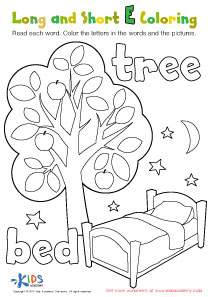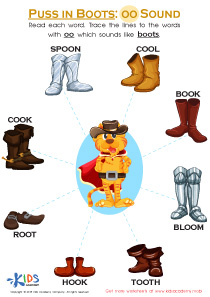Two Vowels Together Worksheets for Ages 5-7
9 filtered results
-
From - To
Unlock the magic of reading with our "Two Vowels Together Worksheets" designed for ages 5-7! These fun and engaging worksheets help early learners recognize vowel pairs, boosting their phonics skills and reading confidence. Perfect for classroom or home use, each activity enhances children's ability to identify, pronounce, and use vowel combinations correctly. Enjoy vibrant illustrations and interactive exercises that transform learning into a playful journey. Whether you're a parent or teacher, these printables are a fantastic resource to support your child's language development and foundational reading abilities. Start the adventure towards fluent reading today!
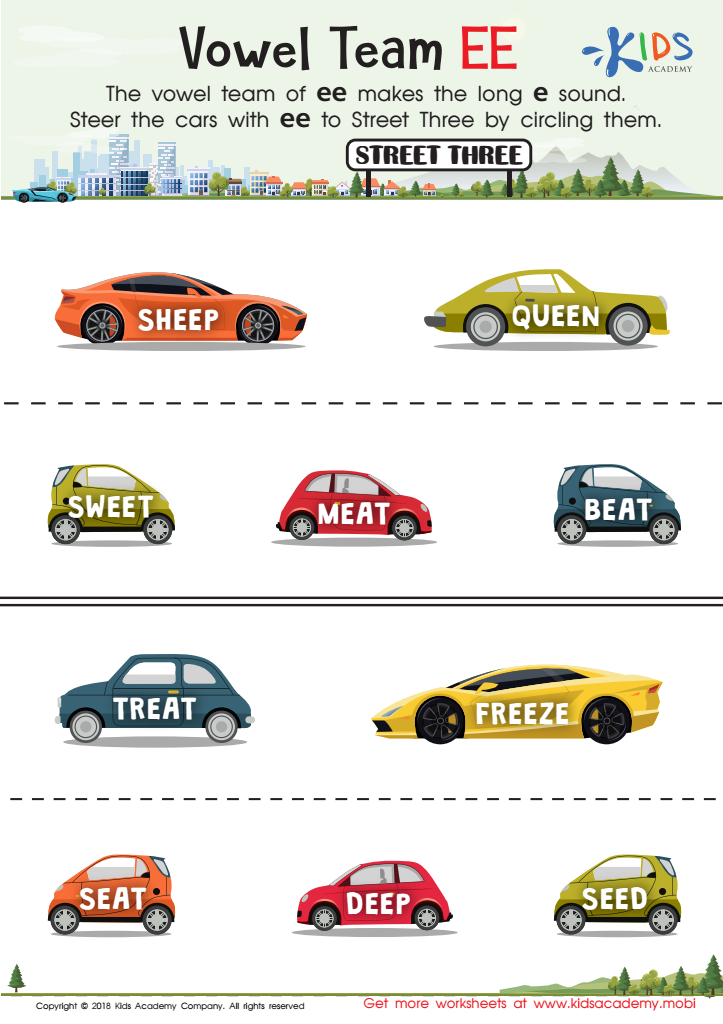

Vowel team ee Worksheet
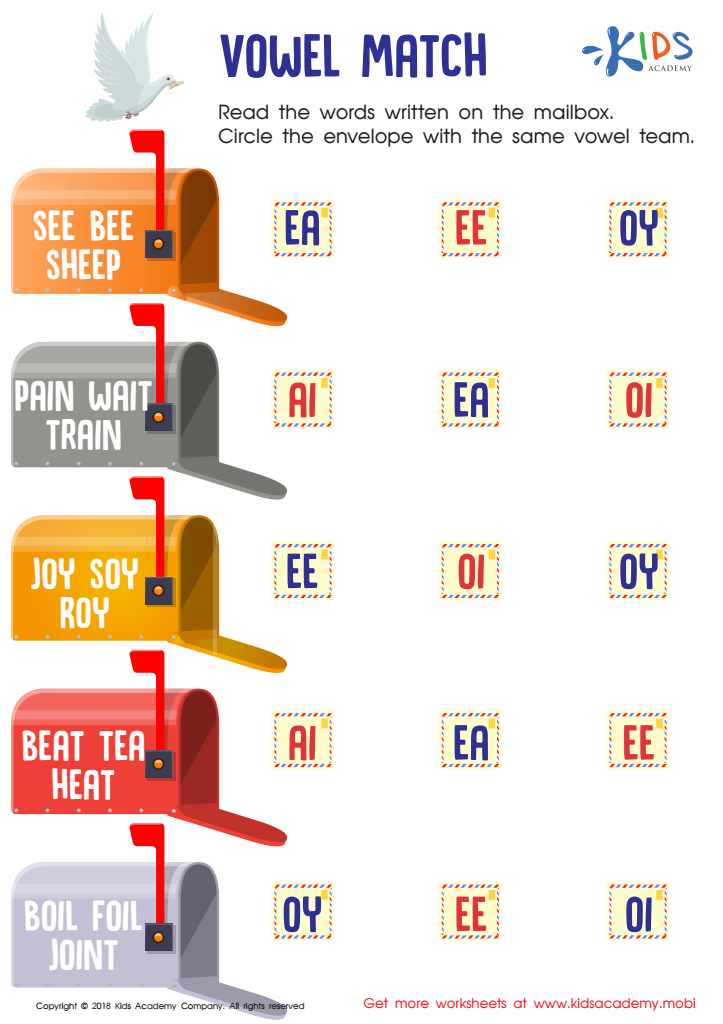

Vowel match Worksheet
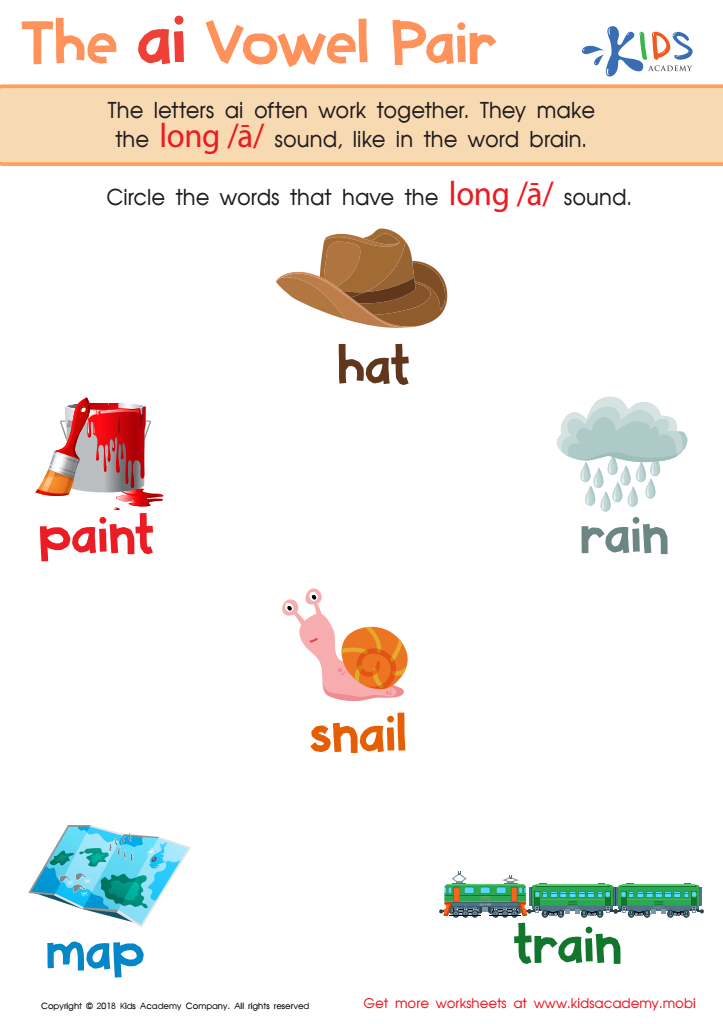

The AI Vowel Pair Worksheet


Vowel Diphthongs OI OY Worksheet
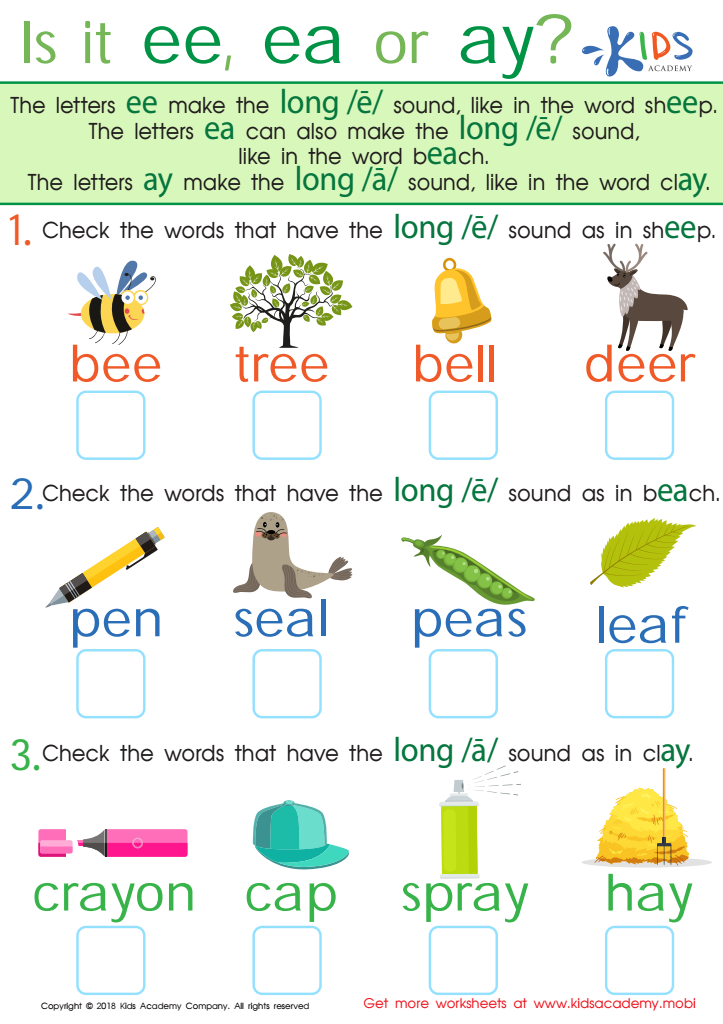

Is It EE, EA, or AY? Worksheet
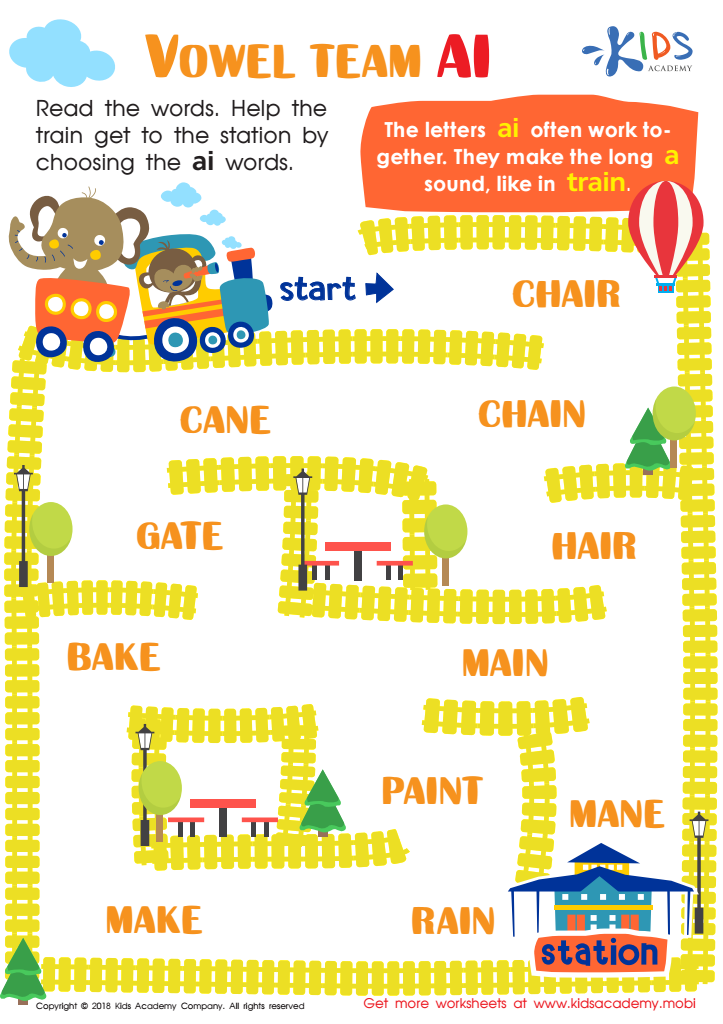

Vowel team ai Worksheet
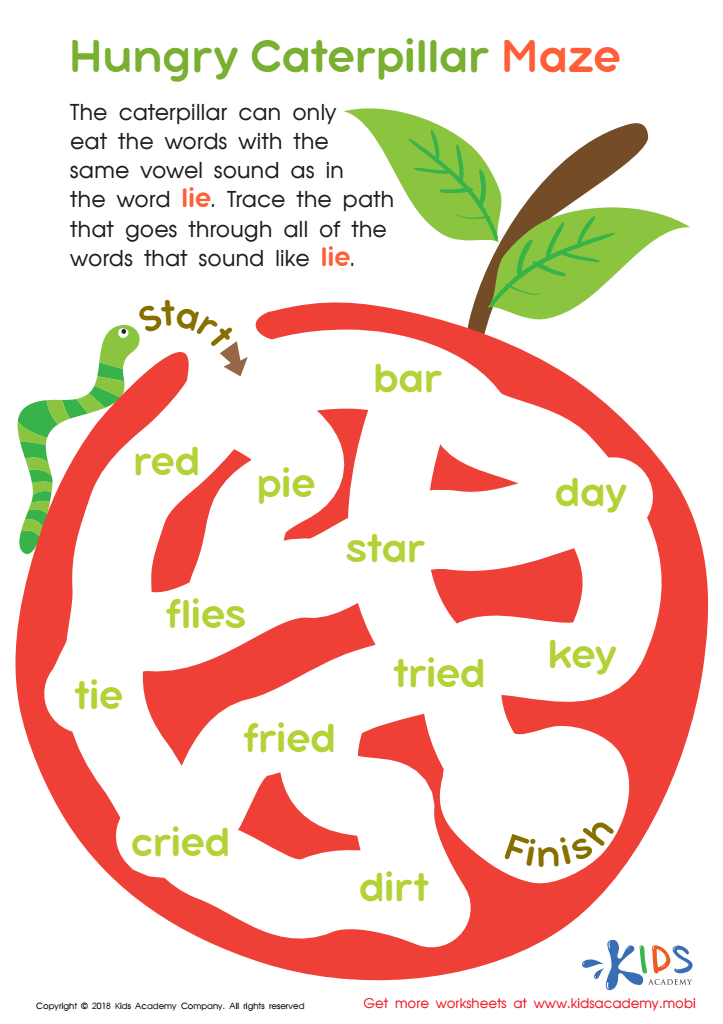

Hungry Caterpillar Maze Worksheet


Two Sounds for OO Worksheet
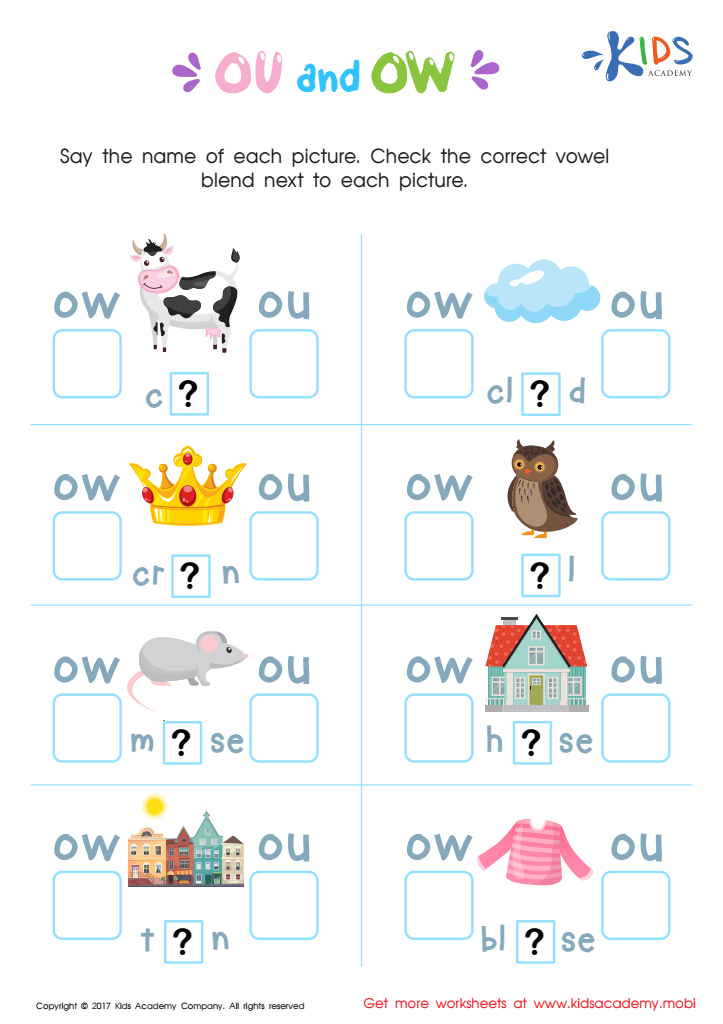

OU and OW Words Worksheet
Caring about the concept of "Two Vowels Together" is crucial for young learners, especially for parents and teachers guiding children aged 5-7. This period marks the budding stages of literacy, where understanding vowel combinations significantly enhances reading fluency and spelling skills. When two vowels appear together in a word, they often follow the rule "when two vowels go walking, the first one does the talking," which means the first vowel typically says its name, and the second one is silent (e.g., boat, seat). Recognizing these patterns early helps children decode new words more efficiently, benefiting their reading comprehension.
Additionally, mastering these vowel combinations can boost confidence as children read more complex texts. Knowing common vowel pairs such as "ea," "oi," and "ou" equips young readers to tackle unfamiliar words with greater ease. It also aids in correct spelling, as children learn the predictable sequences vowels often follow.
Moreover, linguistic knowledge greatly impacts academic success beyond reading and writing. Early literacy competence is linked to better performance in various subjects, as it allows children to understand instructions and access educational content readily. By focusing on "Two Vowels Together," parents and teachers set a solid foundation for continued academic growth and lifelong learning.
 Assign to My Students
Assign to My Students




